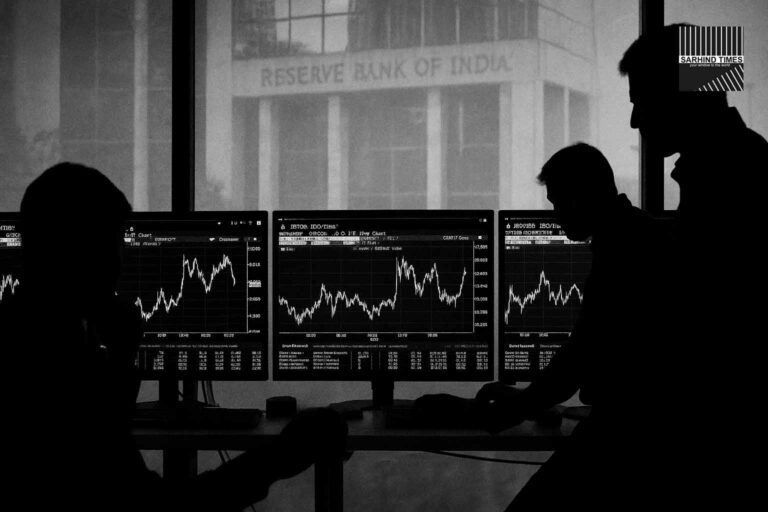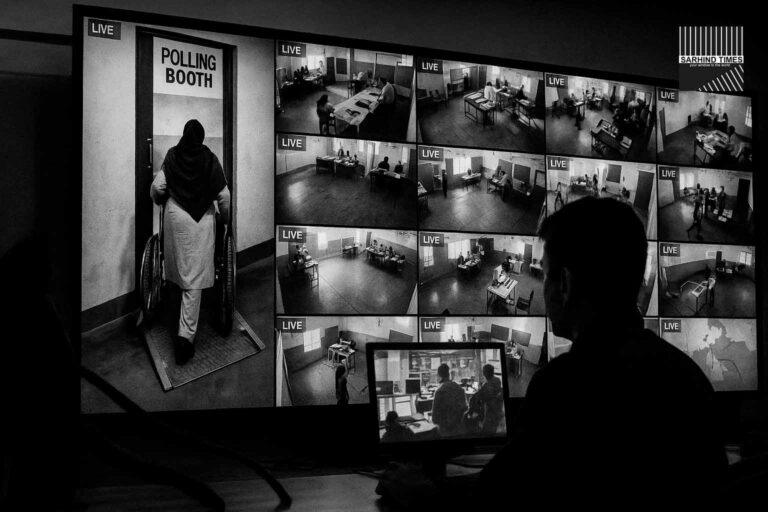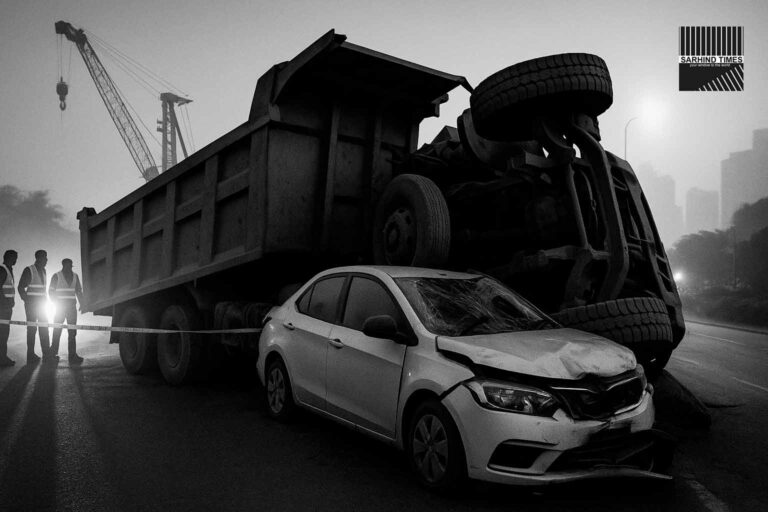New Delhi / Varanasi, October 17, 2025 — India’s space ambitions have been given a fresh shot of urgency. During the 14th convocation of IIT-BHU, ISRO Chairman V. Narayanan reaffirmed that India aims to establish its own orbital space station by 2035, with initial modules expected to go up as early as 2027. At the same event, he also confirmed ongoing work on Chandrayaan-4 and Chandrayaan-5, fully intent on building momentum in lunar exploration and human spaceflight.
This articulation comes amid a broader push by ISRO to deepen capabilities in microgravity science, life support systems, long-duration missions, and downstream industrial spinoffs. From precision agriculture to disaster management, the applications of space technology already touch millions of lives — but a fully-fledged space station would allow India to stand among the few nations capable of sustained orbital presence.
Below is a deeper dive into the roadmap, challenges, strategic rationale, and implications as India leans into its next frontier in space.
Section I: What Was Announced — The Vision & Milestones
Space Station by 2035
In his address, Dr. V. Narayanan declared that India’s ambition is to have a modular Indian space station—sometimes referred to in media reporting as Bharatiya Antariksha Station (BAS)—in orbit by 2035. He and his team envision deploying initial modules starting around 2027, and progressively assembling the full station over the ensuing years.
He also confirmed that Chandrayaan-4 and Chandrayaan-5 are under active development. to some contemporaneous media coverage, the first module for the BAS could be launched by around 2028 (though earlier statements also mention 2027) as ISRO begins modular deployment efforts.
Narayanan’s address also touched on Gaganyaan, India’s human spaceflight program, and ongoing efforts to validate crew modules, abort systems, and long-duration life support.
Chandrayaan-4 / Chandrayaan-5: Lunar Missions in the Pipeline
The Chandrayaan programme — India’s lunar exploration series — has so far delivered orbiters, landers, and rovers (most recently Chandrayaan-3’s successful soft landing).
- Chandrayaan-4 is conceived as a lunar sample return mission — the next logical step after surface exploration. The plan is for ISRO to collect moon regolith, package it in a reentry module, and bring it back to Earth.
- In parliamentary statements, the government has affirmed that Chandrayaan-4 will involve advanced docking mechanisms and sample retrieval systems.
- Chandrayaan-5 is often discussed as a follow-up or complementary mission — possibly focusing on polar or specialized science goals. Some media coverage suggests collaboration dimensions (e.g., potential partnerships with Japan) and exploration of lunar south pole regions.
Some reporting projects Chandrayaan-4’s launch around 2027–2028 and Chandrayaan-5 in 2028–2029.
Together, these missions will serve as testbeds for technologies (docking, ascent, reentry, robotic operations) that are crucial for sustained presence and human space missions.
Section II: Strategic Rationale & Benefits
Why does India aim for a space station? What lies behind this ambitious target?
Building Indigenous Microgravity Platforms
A domestically operated space station grants India sustained microgravity research capabilities — vital for life sciences, materials science, pharmaceutical development, fluid experiments, and other fundamental studies not possible in ground labs.
With its own station, India would no longer rely solely on foreign facilities (e.g. ISS partners) or external collaborators for platform time. This autonomy allows scheduling flexibility, data sovereignty, and regional leadership in space science.
Strengthening Human Spaceflight Capability
Part of the long-term roadmap is human missions: India aims to send astronauts into space under Gaganyaan, and eventually to the Moon. A station allows extended-duration missions, crew rotations, life support systems validation, radiation studies, and astronaut operations in a controlled orbital environment.
Testing modules, crew habitation, docking, resupply, and emergency aborts on a domestic station not only boosts confidence but also accelerates the maturity of mission components for lunar or deep space missions.
Enhancing National Prestige & Space Leadership
A national space station sends a global signal: India moves into an elite club of nations with sustained orbital presence. It showcases technological maturity, space sovereignty, and capacity for high-end systems integration.
It positions India as a regional hub for space science, offering satellite and microgravity platforms to universities, startups, and international collaborators under Indian control.
Downstream & Societal Applications
Space systems have become integral to agriculture advisories, precision weather forecasting, telemedicine, disaster response, navigation, remote sensing, and connectivity. A national station strengthens the ecosystem: local industries, startups, space tech ventures, and academic research can all plug into new platforms, satellite services, and innovations.
Indian policymakers often emphasize spinoffs: life support, robotics, materials, additive manufacturing, space-borne sensors, and systems that can spin off to terrestrial use. Narayanan’s remarks signal that the station is not just symbolic, but part of an expanding space economy.
Section III: Technical & Programmatic Challenges
Ambition, however, is only one side of the equation. The path to 2035 is fraught with technical, financial, and operational challenges.
Modular Architecture & Launch Phasing
A station cannot be launched in one go—it must be modular, assembled in orbit over time. That demands reliable launch vehicles, docking and rendezvous systems, module integration, on-orbit operations and maintenance.
Logistics, scheduling, and module interfaces must be robust. Delays or failures in early modules cascade.
Launch Vehicle & Payload Capability
Current Indian heavy lift vehicles (e.g. LVM3, GSLV variants) may be insufficient for the largest modules or deep space logistics. India is working on next-generation launchers (NGLV / Soorya concept) with higher payload capacity to facilitate station assembly and future human missions.
Some reports mention the first module could lift off around 2028 using existing vehicles, with later modules using advanced rockets.
Life Support, Radiation, Thermal Control, Maintenance
Operating a habitable station requires closed-loop life support (oxygen, CO₂ removal, water recycling, waste management), radiation shielding, thermal control, microgravity structural issues, docking ports, power, communications and resupply strategies.
Long-duration exposure to space environment poses degradation, servicing needs, and redundancy requirements.
Crew Safety, Abort Systems & Redundancy
Any human-rated station must have reliable escape systems, redundancy across critical systems, medical contingencies, and safe docking/departure protocols. Failures cannot be acceptable.
Infrastructure, Cost & Budget Constraints
A multi-decade flagship project demands sustained funding, political continuity, infrastructure investments, ground support, mission operations, launch facilities, and supply chains. Budget changes or shifting priorities can jeopardize timelines.
International Coordination & Standards
If India aspires to collaborate internationally, it must adopt compatible docking systems, standards (e.g. for crew exchange), and integration protocols. Mismatches or delays can limit cooperation.
Technology Readiness & Staged Demonstrations
Before full station assembly, India must validate intermediate steps: orbital docking, module testing, crew systems, robotic arms, in-orbit servicing, etc. Failures in earlier missions could ripple downstream.
Chandrayaan-4’s docking ambitions, reentry, and sample return systems are part of that build-up.
Section IV: Roadmap & Timeline
Below is a synthesis of likely intermediate milestones and staging:
| Timeframe | Milestone / Goal | Purpose & Function |
| ~2027 | Launch of first module(s) | Begin orbital assembly, module plumbing, test docking infrastructure |
| Late 2020s (2028 onward) | Chandrayaan-4 & Chandrayaan-5 missions | Validate docking, sample return, module operations in lunar domain |
| Early 2030s | Continued module deployment, crew system tests | Incremental station growth, demonstration of life support and long mission modules |
| Mid-2030s | Full assembly, crew habitation, sustained operation | India begins routine use, research missions, resupply, international collaborations |
Some public statements suggest the first module could be launched around 2028. Earlier remarks also claim modules from 2027.
By 2035, the vision is for the station to be operational, supporting crews, research, and autonomous usage.
Beyond that, the station may serve as a stepping stone to crewed lunar or deeper-space missions (e.g. moon base or orbital relay platforms).
Section V: Strategic & Geopolitical Implications
Regional & Global Space Race
As space becomes a core domain of strategic competition, India’s push for a domestic station positions it more prominently in the geospatial order. It competes with established powers (U.S., Russia, China, ESA) and rising ones (Japan, UAE).
If successful, India could host international experiments, partner with global agencies, and become a node in space diplomacy and science.
Collaboration & Soft Power
India may attract projects from universities, startups, and nations seeking microgravity platforms or orbital laboratories. This can strengthen scientific ties, increase soft power, and create revenue streams via paid access.
Security & Dual-Use Considerations
Space infrastructure can have defense, surveillance, communications, and strategic utility. A national station deepens capabilities in satellite servicing, space domain awareness, and resilience.
Space Economy & Private Sector Ecosystem
Ambitious projects catalyze private sector involvement: manufacturing, subsystems, ground equipment, space logistics, robotics, and operations. Startups can find new markets and talent can be incentivized.
Narayanan’s remarks signal encouragement to students and startups to plug into the space ecosystem.
Section VI: Risks, Contingencies & Mitigation
- Timeline slippage: Delays in any module or docking test can push the entire schedule. Robust contingency planning is essential.
- Budget cuts / political shifts: Sustained funding over years is vital; political will must remain consistent.
- Technical failures: Redundancy, backup systems, rigorous testing and staged demonstrations reduce catastrophic risk.
- International cooperation constraints: If India is isolated or lacks compatible standards, collaboration could stall.
- Talent & infrastructure bottlenecks: Recruiting sufficient engineers, scientists, ground support and expanding infrastructure is nontrivial.
- Regulatory / safety oversight: Spacefaring nations are under high scrutiny; safety failures could lead to reputational damage.
Mitigation strategies include phased development, parallel paths, increased private sector leverage, risk-sharing partnerships, and cautious staging.
Section VII: What to Watch in the Coming Years
- Docking / orbital rendezvous demonstrations
- Module test flights / engineering models
- Progress on Chandrayaan-4 / 5 contract awards, designs, component delivery
- Announcements on next-generation launchers
- Crew module validations, life support systems, abort tests in Gaganyaan
- International collaborations or partnerships (e.g. joint experiments, station modules)
- Budget allocations and Parliament oversight on space programs
- Policy direction from Department of Space / Government backing
Section VIII: Conclusion
India’s space ambitions have steadily matured: from launching satellites to soft-landing on the Moon, to aiming for sustained human presence in orbit. Dr. V. Narayanan’s articulation at IIT-BHU signals a shift from milestone chasing to infrastructure building. The target of an Indian space station by 2035 may seem audacious, but with modular deployment, technological maturation, and methodical stepwise progress, it lies within the realm of possibility.
If India succeeds, the payoff is not merely prestige — it’s a leap in scientific sovereignty, industrial capability, human spaceflight readiness, and a vibrant space economy. The path is steep, but the trajectory is clear: India is setting its sights not just on the Moon, but on the sustained future of space itself.
This article will be updated as ISRO makes further announcements, module rollouts, or international collaboration agreements emerge.
#ISRO #SpaceStation #Chandrayaan #Gaganyaan #SpaceTech #DeepSpace #BharatiyaAntarikshaStation #IndianSpaceProgram #ModularStation #LunarMissions

























+ There are no comments
Add yours